I’ve used the same pair of wading boots for more than four years. Aside from the half-dozen boots I’ve worn for reviews in that time frame, I haven’t changed boots because I haven’t needed to. Even a yearly average of 120 fishing days hasn’t pushed me to the boot section of my local fly shop.
That’s likely going to change – and not because my boots will finally bite the dust. After a few months with the new Orvis PRO wading boots, I think I’ve found a new favorite. The PRO boots are lightweight, flexible, and easy to wear all day – absolute requirements for anglers who spend most of their fishing time wading and hiking through various terrain. Combine that with the durability of the Michelin outsole (yes, the tire company) and the reasonable price ($229), and the PRO boots have what it takes to become a favorite of anglers everywhere.
What Works
Outsole
Orvis partnered with Michelin – the tire company – to craft the outsole for this boot. According to Orvis’ marketing material, the Michelin Outdoor Extreme outsole gives anglers 25% better abrasion resistance and 43% better wet rubber traction than traditional wading boots.
I’ll vouch for the abrasion resistance. Even after taking my PRO boots boulder hopping, hiking in the backcountry, and a few long walks across sagebrush flats, the boots aren’t showing any worrying signs of wear.
As far as traction goes, the PRO boots felt and handled like I expected a rubber-only sole would. I opted not to add studs to the soles when I first got the boots, and I was pleased with the performance.
Comfort
Comfort is inherently subjective, but I think you’d be hard-pressed to find anyone who won’t like the fit of the PRO boots.
There’s plenty of room at the front of the boot, so even with thick socks and waders your feet don’t feel cramped. Also of note are the OrthoLite insoles, which were created specifically for this boot. Of all the bells and whistles Orvis packed into the PRO boots, the insoles are what I’ve noticed most. My feet aren’t sore and achy like they usually are after a long day of wading. Even after longer hikes between rivers, my feet felt better than expected after having been in wading boots all day.
Ankle support
I’ve noticed an interesting trend in wading boots over the last half-decade. They seem to be built in one of two extremes – stiff enough that you’re likely to break your leg instead of rolling an ankle, or flexible enough that the boot acts as padding between your ankles and all the rocks you’ll break them on.
Of course, a few pairs found the middle ground, but no one has done that as well as Orvis with the PRO boots. These are, without a doubt, the best boots I’ve ever used where ankle support is concerned. I have weak ankles, but hate feeling like I’m wearing a ski boot while I’m fishing. The PRO boots are stiff up through the ankle, but move with you instead of preventing movement altogether. That’s an important distinction I’m glad to finally see in wading boots.
Weight
These aren’t the feathers that the Orvis Ultralight boots are, but they’re not too far off, either. As stated above, they’re hefty enough that you have the stability you need in a good pair of boots. But they’re not too heavy to wear all day, especially if that day involves a lot of walking and/or hiking.
What doesn’t work
Laces
I should start by noting that the lacing system on the PRO boots is probably the best I’ve ever used on wading boots. It’s easy to cinch the laces down tight, they seat well into the hooks, and they’re plenty long. But, at the end of the day, I prefer the BOA system over laces. When it’s cold as sin, turning a dial is a lot more convenient than tying laces. And, I’ve only had one BOA system fail me in all my years of fishing. I’ve broken more laces than I can remember. I’ll have my fingers crossed for a future iteration of the Orvis PRO wading boots that sports the BOA lacing system.
Needs studs
As I stated earlier, the traction out of these boots is what I’d expect from a rubber-only sole. No matter how aggressive the tread, or advanced the technology in the rubber, you’ll always stumble and slip a bit on moss-covered river rocks. Like all other rubber-soled wading boots, the extra bite provided by studs will go a long way towards avoiding as many slips and stumbles as possible, especially in challenging wading situations.
Final Word
The Orvis PRO wading boots are the first pair I’ve used in almost five years that make me want to finally replace my current pair of boots, which I’ve used extensively for four years. They’re light, extremely comfortable, and offer the perfect medium between flexibility and stability. The ankle support is fabulous, and you can wear these boots all day without your feet feeling beat to hell. Even longer hikes or navigating big boulder fields won’t faze the PRO boots. At $229, they’re reasonably priced, and will serve you well for years to come.















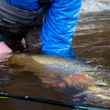



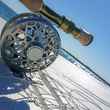
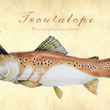








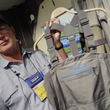
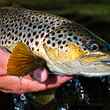
Comments
JohnnyUtah replied on Permalink
I agree with everything about this review of the Orvis Pro boots. I was previously in Patagonia Foot tractors and before that a Simms boot. The traction is awesome in these. Ankle support is the best I've used. 2 ankle surgeries thus far so I'm highly perceptive of how a shoe or boot feels. They dry much faster than the FTs and traction is better than both previous boots.. I used the jagged metal bars on the FT and have yet to add a stud to these. On my Simms I used hex head screws from Ace. My only complaint is I hate neon. While I'd like a brown boot, I'd be okay with the black and a different color liner (blue, green, or even red).
Pages